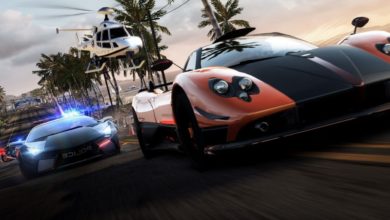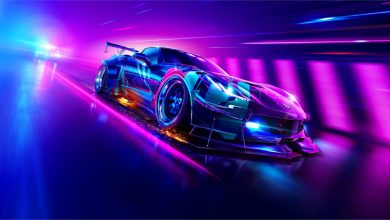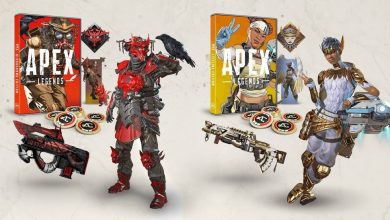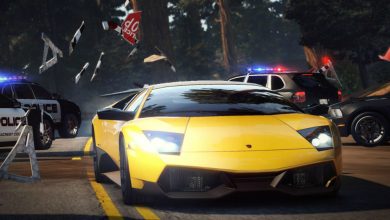![]() 2009 is a very important year for the Need for Speed franchise; one that sees the series branch out into three racing disciplines – arcade, action and simulation. Probably the most intriguing of the three is Need for Speed: Shift, the series’ return to authentic professional racing. We had the opportunity to talk to Jesse Abney, producer for Need for Speed Shift, about what we can expect from the game and from the franchise in the future..
2009 is a very important year for the Need for Speed franchise; one that sees the series branch out into three racing disciplines – arcade, action and simulation. Probably the most intriguing of the three is Need for Speed: Shift, the series’ return to authentic professional racing. We had the opportunity to talk to Jesse Abney, producer for Need for Speed Shift, about what we can expect from the game and from the franchise in the future..
[singlepic id=1275 w=450 float=center]
Shift looks like a drastic change from recent NFS games. The last few games were quite story-heavy. What’s the concept for Shift?
We’ve outlined Need for Speed’s brand appeal with the three games that we’re releasing this year. Over the years, our games have covered three aspects of racing – action, arcade and simulation, and this year we have titles focusing on each of those areas. Need for Speed: Shift is our simulation title for next-generation consoles, but it will retain the signature style of the Need for Speed franchise. In a way, its an extension of what we started with ProStreet. It’s all about professional racing; it’s got a very WTCC, touring car feel to it and with the Slightly Mad engine to power it, we’ve been able to create a very compelling simulation of the real thing.
With such a dramatic change from recent games, how will you retain the signature Need for Speed style in Shift?
Well, we’re doing simulation, but we’re doing it with the style that Need for Speed is known for. Rather than a typical sterile, car showroom look, we’re focusing on a much more cool, progressive style – dramatic angles, dramatic lighting, liveries that are in tune with today’s professional motorsport. Essentially, we’re putting a very cool Need for Speed wrapper on everything, even down to our font selection, the dramatic camera placement, the way our front end is structured, and how our customisation engine works. Overall, we’re just amping up the excitement factor that you see in Need for Speed games every year but which is often lacking in the simulation category.
[singlepic id=1278 w=450 float=center]
On a scale of 1 to 10, where Burnout is 1 and GTR or Gran Turismo is 10, where does Shift fall in terms of car handling and simulation?
Shift employs an all new racing engine that is very much rooted in a real world physics-based simulator. So at one end of the spectrum, this is a very serious simulator. Let’s call it an 8 or a 9. But through the scalability of our physics engine, AI system, and damage model, we are actually allowing players to dial that back all the way to the other end of the spectrum. Let’s call it a…what was that at the other end of the spectrum?
Burnout.
Right, let’s call it a 4 then. While Burnout is very much an action/arcade game, it certainly had a lot of real world physics at play. Shift employs a lot of computer assists as well as manufacturing assists, which are often reflected in the real world, like traction control, stability control, and interlocking brakes. We also have braking assists, steering assists and other elements that run under the hood that really simplify the controls and make the game far more accessible for the traditional Need for Speed fan. So we have options at the front end to let the player get rid of all that down to be a much more serious simulation game, even down to the racing line and braking indicator; you can turn all of that off. So there’s a lot of scalability in Shift depending on your comfort level.
[singlepic id=1276 w=450 float=center]
Tell us a bit about the new driver perspective that employs all these various camera animations when you crash or when you’re traveling really fast. How do you ensure that this makes the game more immersive without confusing or disorienting the player?
Really, it’s just through constant refinement of the system. This is an experience that’s been crafted over a year and it’s been designed in collaboration with real race car drivers. So it does take a lot of tweaking and tuning, but it’s essentially a correlation to the real world and it’s about the violent nature of driving these cars at the edge of control. By modeling G-forces into the dynamic camera system, you’re not only adding a layer of immersion, but also assisting them to a degree by helping them feel closer to the person in the car that’s on that track.
Can you name some of the tracks and circuits we’ll that will be available in the game. Will there be a mix of fictional tracks and real-world circuits?
It’s a mix. The majority of them are real world locations; renowned circuits like Nordschliefe/Nurburgring, Spa, Laguna Seca, and Willow Springs. There are also fictional tracks like the downtown London and Tokyo tracks as well as some GP courses that we’ve designed.
[singlepic id=1279 w=450 float=center]
From the initial screenshots and videos that were released, a lot of people found Shift very similar to Grid. Over the course of development, have you been looking at other games from the genre for ideas or inspiration?
Absolutely. We’re gamers and we play these fantastic games. We consider Grid the high watermark and it’s in many ways a technological feat. So we really look at some of these games with admiration and respect, and we take a lot of cues and draw a lot of motivation to make our game that much better.
Next page: Driver profiles, multi-player, and demo



